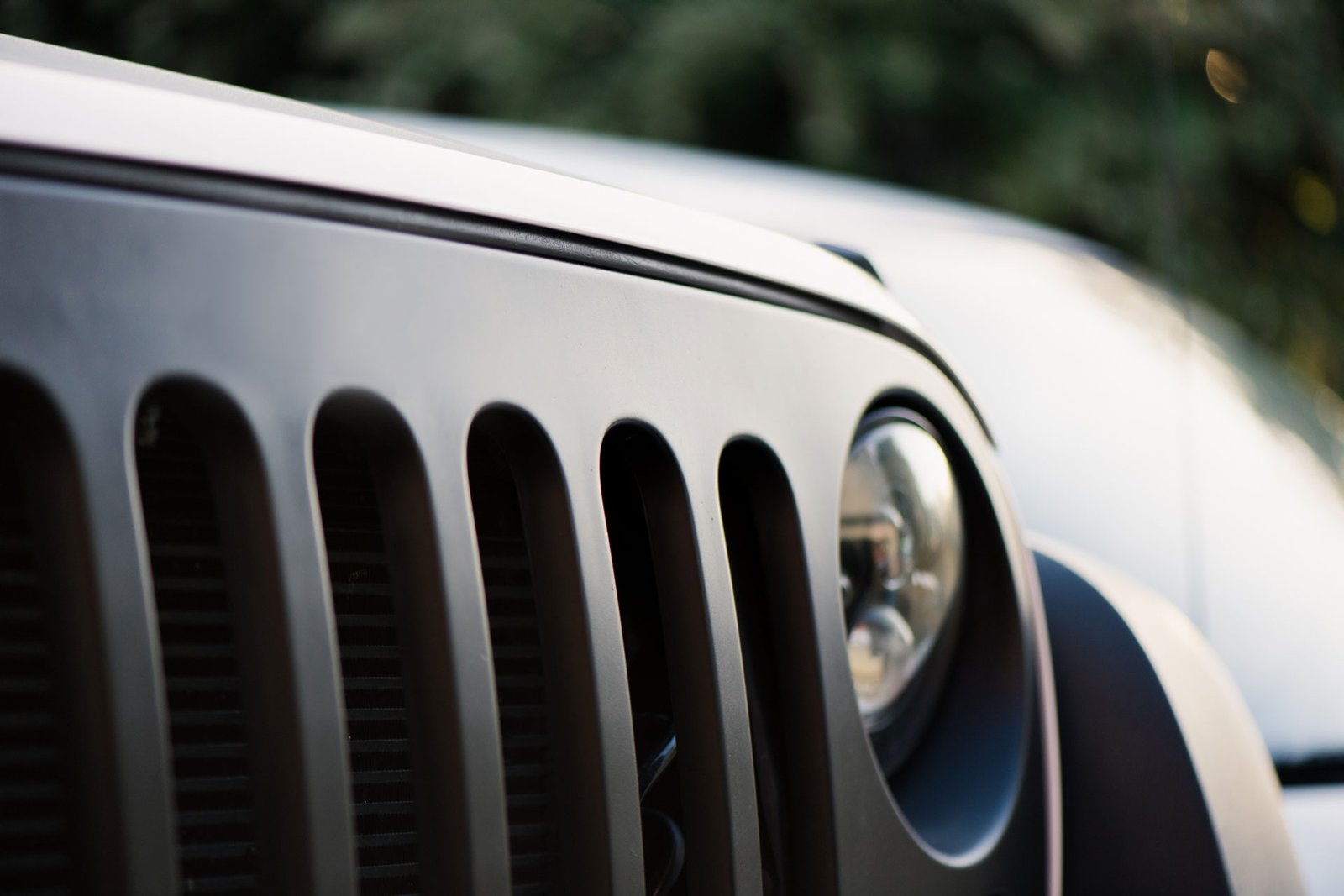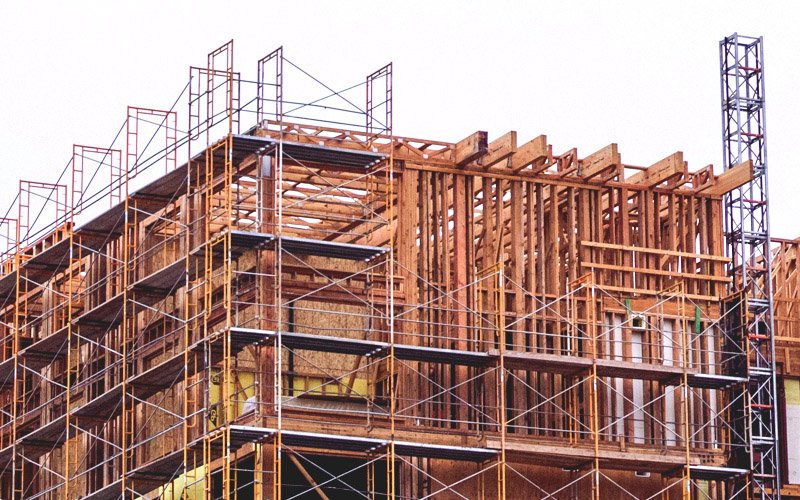
2017 Divi Lead
$19,345
The Essential Guide to Paccar DPF Delete: Benefits and Challenges
Paccar diesel engines are renowned for their reliability and performance in the trucking industry, but their DPF systems can present significant maintenance challenges and operational costs. For fleet managers and owner operators using Paccar engines, understanding the diesel particulate filter (DPF) system is crucial for optimizing performance and managing maintenance expenses effectively.
In this comprehensive guide, we’ll explore everything you need to know about Paccar DPF delete options, including the benefits, challenges, and technical considerations. Whether you operate a single truck or manage an entire fleet, this information will help you make informed decisions about your Paccar engine’s performance optimization.
Introduction to Paccar Engines and DPF Systems
Paccar engines have established themselves as workhorses in the commercial transportation industry, but like all modern diesel engines, they come equipped with emission control systems that can impact performance and maintenance requirements.
Paccar diesel engines, including popular models such as PX-6, PX-7, PX-8, PX-9, and MX-13, are designed to meet stringent emissions standards through the use of diesel particulate filters (DPF). While these filters effectively reduce particulate matter in exhaust emissions, they can create several operational challenges:
- Reduced fuel economy due to increased backpressure
- Higher operating temperatures affecting engine components
- Frequent regeneration cycles that consume additional fuel
- Increased maintenance costs and potential downtime
- Reduced engine lifespan due to added stress
Diesel Spec and other providers have developed engine tuning and DPF delete services specifically designed for Paccar engines to address these challenges while improving overall performance.
Understanding DPF EGR Systems
The DPF EGR system represents a complex emissions control strategy designed to reduce harmful exhaust particulates and nitrogen oxides, but understanding its operation is essential for evaluating potential modifications.
A DPF system works by capturing soot particles from the engine’s exhaust before they can be released into the atmosphere. The system uses a ceramic filter that traps these particles, which must then be periodically burned off through a process called regeneration. This regeneration can occur passively during normal operation or actively through a controlled burn initiated by the engine’s computer.
Meanwhile, the Exhaust Gas Recirculation (EGR) system recirculates a portion of the exhaust gas back into the engine’s intake. This reduces combustion temperatures and therefore limits nitrogen oxide (NOx) production. However, this process can:
- Increase carbon buildup within the engine
- Reduce overall engine efficiency
- Create additional maintenance requirements
- Contribute to oil contamination
- Necessitate more frequent filter cleanings
Many Paccar engines also incorporate Selective Catalytic Reduction (SCR) technology, which uses Diesel Exhaust Fluid (DEF) to convert NOx emissions into nitrogen and water. While effective at reducing emissions, these systems add complexity, expense, and additional maintenance requirements.
Paccar DPF Delete Process
The Paccar DPF delete process involves a series of precisely executed modifications to both the physical components and the engine control module programming.
Physically, the DPF delete requires removing or bypassing several emission control components:
- The diesel particulate filter itself
- Associated sensors and monitoring equipment
- In many cases, the EGR system
- Sometimes the diesel oxidation catalyst (DOC)
However, simply removing these components isn’t sufficient. The engine control module (ECM) must be reprogrammed to prevent error codes and ensure proper engine operation. This reprogramming includes:
- Disabling DPF regeneration cycles
- Modifying fuel injection timing and duration
- Adjusting air-fuel ratio parameters
- Eliminating fault codes related to missing emissions equipment
- Optimizing performance parameters for the modified configuration
The process can be performed relatively efficiently using online programming tools and a laptop with Windows 10 or newer. Professional services typically utilize tools like the Nexiq USB Link 2 interface, which allows direct communication with the engine’s computer.
To complete a proper DPF delete, specialized knowledge of both the physical systems and the software programming is required. While DIY options exist, professional implementation ensures the process is done correctly, minimizing the risk of engine damage or performance issues.
Off Highway Tuning and Performance
Off highway applications present unique opportunities for Paccar engine optimization, particularly when unrestricted by on-road emissions requirements.
Many Paccar engines are used in off-road applications such as:
- Construction equipment
- Agricultural machinery
- Mining operations
- Forestry equipment
- Stationary power generation
For these applications, off highway tuning can deliver significant performance advantages:
- Increased horsepower and torque for improved productivity
- Better throttle response and reduced turbo lag
- Lower operating temperatures
- Extended engine life due to reduced stress
- Improved reliability under heavy load conditions
Off highway tuning specifically targets the performance parameters that matter most in these environments. Without the constraints of on-road emissions regulations, these modifications can focus exclusively on optimizing power delivery, fuel efficiency, and engine durability.
Fleet managers and operators in these industries often find that proper engine tuning and DPF deletion can dramatically reduce downtime and maintenance costs while increasing equipment productivity and reliability.
Online Programming and ECM Calibration
Modern engine management technology allows for sophisticated remote programming and ECM calibration, creating flexible options for Paccar engine optimization.
Online programming enables technicians to modify engine parameters without extensive physical modifications. Using tools like the Nexiq USB Link and a laptop with appropriate software, qualified technicians can:
- Access the engine control module remotely
- Upload customized programming
- Adjust multiple performance parameters
- Monitor real-time engine data
- Fine-tune calibrations based on performance feedback
This approach offers several advantages:
- Reduces downtime as programming can often be completed in a few hours
- Allows for precise customization to meet specific operational needs
- Provides flexibility to adjust settings as requirements change
- Enables data collection for ongoing performance optimization
- Can be performed at your location rather than requiring a shop visit
ECM calibration after a DPF delete focuses on optimizing fuel delivery, air-flow parameters, and timing to match the engine’s new operating condition. Without the restriction of the DPF system, the engine can operate more efficiently, but proper calibration is essential to realize these benefits safely.
Professional calibration services ensure that all systems work harmoniously together, preventing potential damage that could result from improper programming or mismatched components.
Service Title
Lorem ipsum dolor sit amet, consectetur adipiscing elit. Phasell sed nibh dignissim, cursus tellus sit amet, ultrices mauris. Aliquam
Service Title
Lorem ipsum dolor sit amet, consectetur adipiscing elit. Phasell sed nibh dignissim, cursus tellus sit amet, ultrices mauris. Aliquam
Service Title
Lorem ipsum dolor sit amet, consectetur adipiscing elit. Phasell sed nibh dignissim, cursus tellus sit amet, ultrices mauris. Aliquam
Service Title
Lorem ipsum dolor sit amet, consectetur adipiscing elit. Phasell sed nibh dignissim, cursus tellus sit amet, ultrices mauris. Aliquam
Service Title
Lorem ipsum dolor sit amet, consectetur adipiscing elit. Phasell sed nibh dignissim, cursus tellus sit amet, ultrices mauris. Aliquam
Service Title
Lorem ipsum dolor sit amet, consectetur adipiscing elit. Phasell sed nibh dignissim, cursus tellus sit amet, ultrices mauris. Aliquam

Paccar ECM tuning
Paccar ECM tuning is a critical aspect of optimizing engine performance, especially after modifications such as a DPF delete. The Engine Control Module (ECM) governs numerous parameters that directly influence how the engine operates, including fuel injection timing, air-fuel ratio, turbocharger boost levels, and regeneration cycles. By carefully recalibrating the ECM, technicians can unlock improved horsepower, torque, and fuel efficiency while ensuring the engine runs smoothly without the emissions components.
ECM tuning for Paccar engines requires specialized software and hardware tools, such as the Nexiq USB Link interface and compatible laptops running at least Windows 10. These tools enable precise communication with the engine’s computer, allowing for the upload of custom calibration files tailored to specific operational needs.
One of the main goals of ECM tuning following a DPF delete is to disable the regeneration process and eliminate error codes related to the missing emissions equipment. This prevents the engine from entering unnecessary regeneration cycles that would otherwise consume fuel and cause performance interruptions. Additionally, tuning adjusts fuel delivery and air management to optimize combustion efficiency in the absence of the DPF and EGR systems.
Professional ECM tuning services often provide a full range of calibration options to suit various Paccar models and applications, including both on-road and off-highway uses. This flexibility allows fleet managers and owner operators to achieve the best balance between power, fuel economy, and reliability.
Moreover, ongoing ECM calibration updates can be performed online, reducing downtime and enabling quick adjustments as operating conditions or regulations change. This online programming capability enhances the overall value of Paccar ECM tuning by making it more accessible and adaptable.
In summary, effective Paccar ECM tuning is essential for maximizing the benefits of a DPF delete and other engine modifications. It ensures that the engine operates efficiently and reliably, reduces maintenance costs, and helps maintain compliance with applicable standards where possible. Partnering with experienced tuning providers and utilizing advanced tools can make all the difference in achieving optimal results from your Paccar engine.
DPF Delete Benefits and Advantages
Removing the diesel particulate filter system from a Paccar engine can yield several significant performance and operational advantages for vehicle owners.
The most immediately noticeable benefits include:
Improved Engine Performance
- Increased horsepower and torque
- Better throttle response
- Reduced turbo lag
- More consistent power delivery
- Improved engine breathing due to reduced exhaust backpressure
Reduced Maintenance Costs
- Elimination of DPF cleaning and replacement expenses
- No more costly regeneration-related issues
- Reduced risk of engine derating due to DPF faults
- Fewer sensor failures and related diagnostic costs
- Extended service intervals for some components
Enhanced Fuel Economy
- 5-15% improvement in fuel efficiency is common
- Elimination of fuel-consuming regeneration cycles
- More efficient combustion due to optimized programming
- Reduced strain on the engine requiring less fuel to maintain performance
- Lower operating temperatures resulting in more efficient operation
Additionally, Paccar engines with DPF delete modifications typically experience fewer cold-start issues and have improved reliability in extreme operating conditions. The simplification of the exhaust system also means fewer components that can potentially fail, reducing the overall complexity of maintenance.
Many operators report extended engine life after DPF deletion due to reduced operating temperatures and lower stress on engine components. This can translate to significant long-term cost savings beyond the immediate performance benefits.
Challenges and Risks Associated with DPF Delete
While the benefits of DPF deletion can be appealing, it’s essential to understand the potential challenges and risks before proceeding with these modifications.
Legal and Regulatory Considerations
The most significant challenge involves compliance with EPA regulations:
- DPF delete modifications are not legal for on-highway use in the United States
- Vehicles must comply with emissions standards for the year they were manufactured
- Significant fines can be levied against both shops performing these modifications and vehicle owners
- Some jurisdictions have implemented emissions testing programs that would identify modified vehicles
- Commercial vehicles may face additional scrutiny during DOT inspections
Warranty Implications
Modification of emissions equipment will likely affect warranty coverage:
- Manufacturer warranties are typically voided by emissions system modifications
- Engine damage related to these modifications would not be covered
- Even unrelated component failures may be denied warranty coverage
- Dealerships may refuse service on modified vehicles
- Documentation of modifications may affect resale value
Technical Risks
Without proper implementation, technical issues can arise:
- Incorrect programming can cause engine damage
- Improper installation can lead to exhaust leaks or component failures
- Inadequate tuning may result in poor performance or excessive emissions
- Check engine lights and fault codes may persist without proper calibration
- Incomplete modifications can create system conflicts
Performance Trade-offs
Some considerations regarding performance changes:
- Excessive black smoke can indicate improper fuel calibration
- Engine noise may increase with modified exhaust systems
- Some modifications may increase engine wear if not properly implemented
- Heat management becomes more critical with modified systems
- Turbocharger lifespan can be affected by changed exhaust characteristics
Making an informed decision requires weighing these challenges against the potential benefits and considering your specific operational requirements and regulatory environment.
Paccar Engine Maintenance and Monitoring
Proper maintenance and monitoring become even more critical after modifying a Paccar engine’s emissions systems.
Maintenance Practices
After a DPF delete, adjust your maintenance schedule and practices:
- More frequent oil analysis to monitor engine health
- Adjust oil change intervals based on actual contamination rather than fixed schedules
- Regular inspection of exhaust components for integrity
- More attention to fuel system maintenance including filter changes
- Monitoring of turbocharger performance and boost pressures
Performance Monitoring
Keeping track of engine performance metrics helps identify potential issues early:
- Monitor fuel consumption to ensure continued efficiency
- Track oil consumption which can indicate developing problems
- Observe exhaust characteristics for changes that might indicate tuning issues
- Pay attention to engine temperatures, particularly in extreme conditions
- Monitor boost pressure and EGT (Exhaust Gas Temperature) when possible
Proactive Maintenance Approach
A proactive approach to maintenance can extend engine life and prevent costly downtime:
- Consider using higher quality engine oils designed for modified engines
- Implement a comprehensive filtration strategy for both air and fuel
- Consider auxiliary cooling systems for high-stress applications
- Document all maintenance and performance metrics for trend analysis
- Establish relationships with knowledgeable service providers familiar with modified engines
A well-maintained Paccar engine, even with emissions modifications, can provide exceptional reliability and longevity. The key is consistency and attention to detail in your maintenance approach.
Troubleshooting Common Issues
Even with a DPF delete, Paccar engines can experience performance issues that require systematic troubleshooting and informed resolution strategies.
Performance Problems
Common performance issues and their potential causes:
- Loss of power: Could indicate turbocharger issues, fuel delivery problems, or ECM calibration drift
- Black smoke: Often indicates overfueling or air delivery problems
- White smoke: May suggest coolant leaks or timing issues
- Blue smoke: Typically indicates oil consumption problems
- Poor fuel economy: Can result from improper calibration or developing mechanical issues
Electronic Issues
Modified engines can experience electronic challenges:
- Persistent check engine lights: May require additional programming or sensor modifications
- Erratic performance: Could indicate wiring issues or sensor problems
- Intermittent power loss: Often related to intermittent electrical connections
- Communication errors: May suggest ECM issues or interface problems
- Gear selection issues: Could indicate integration problems with transmission control
Diagnostic Approach
When issues arise, follow a systematic diagnostic approach:
- Connect diagnostic equipment to check for stored codes
- Verify all sensor readings are within expected ranges
- Inspect physical components for obvious damage or wear
- Test fuel pressure and quality
- Check electrical connections for integrity
- Consult with your tuning provider if issues persist
Having access to diagnostic tools like a scan tool compatible with Paccar engines can significantly improve your ability to identify and resolve issues quickly. Many professional tuning providers offer ongoing support for troubleshooting after modifications.
Additional Resources and Support
Navigating the complexities of Paccar engine modifications requires access to reliable information and professional support services.
Professional Services
For those seeking professional assistance with Paccar engine optimization:
- Diesel Spec offers comprehensive tuning and DPF delete services for Paccar engines
- Many local diesel performance shops specialize in Paccar modifications
- Mobile tuning services can provide on-site programming in many areas
- Remote tuning options allow for expert assistance regardless of location
Online Resources
Valuable online resources for Paccar engine owners include:
- Diesel forums with dedicated sections for Paccar engines
- YouTube channels demonstrating maintenance and modification procedures
- Manufacturer service information (for standard maintenance procedures)
- Technical libraries with engine specifications and troubleshooting guides
Tools and Equipment
Consider investing in these tools for ongoing maintenance and monitoring:
- Basic scan tool compatible with Paccar engines
- Digital pyrometer for exhaust temperature monitoring
- Fuel pressure testing equipment
- Basic mechanical tools specific to your engine model
- Laptop with appropriate interfaces for ECM communication
Continuing Education
Stay informed about developments in diesel technology:
- Attend training seminars on diesel performance
- Subscribe to industry publications covering heavy-duty engines
- Participate in owner forums to share experiences and solutions
- Follow regulatory developments that might impact modified vehicles
By leveraging these resources, you can maximize the performance and reliability of your Paccar engine while minimizing potential issues associated with modifications.
Conclusion
The decision to pursue a Paccar DPF delete is one that requires careful consideration of operational needs, regulatory environment, and risk tolerance. While the performance benefits and reduced maintenance costs can be substantial, these must be weighed against compliance considerations and potential warranty implications.
For off-highway applications or in areas with different regulatory frameworks, the advantages often outweigh the challenges. However, for on-road applications in jurisdictions with strict emissions enforcement, the legal risks may be significant.
Regardless of your decision, proper implementation by experienced professionals is crucial to achieving the desired results safely. Cutting corners on the deletion process or subsequent maintenance can lead to costly failures and performance problems.
Before proceeding with any modifications to your Paccar engine, consult with a qualified diesel engine specialist who can provide guidance specific to your situation and equipment. Their expertise can help you navigate both the technical aspects and the regulatory considerations involved in optimizing your engine’s performance.
By taking a thoughtful, informed approach to Paccar engine modifications, you can potentially realize significant operational benefits while managing the associated risks effectively.
Get In Touch
(888) 123-4562
Location
2345 Divi St
San Francisco, CA 94222
info@diviauto.com
Open Hours
Mon:10am – 5pm
Tue: 10am – 5pm
Wed: Closed
Thur: 10am – 5pm
Fri: 10am – 3pm
Sat: 10am – 3pm
Sun: Closed


